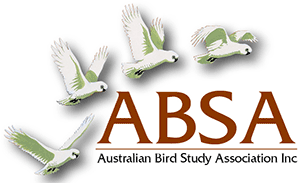Diets of White-bellied Sea-Eagles Haliaeetus leucogaster and Whistling Kites Haliastur sphenurus breeding near Canberra, 2003–2008
| Posted: |
23/03/2021 |
| Author(s): |
A. B. Rose, David Judge, Jerry Olsen, S. J. S. Debus |
During 2003–2008, in and near the Australian Capital Territory, the diet of breeding White-bellied Sea-Eagles Haliaeetus
leucogaster consisted of 8 per cent mammals (1% macropod, 1% hare), 42 per cent birds (33% waterbirds), 9 per cent
turtles and 40 per cent fi sh by number (n = 78 items from four nests). Breeding Whistling Kites Haliastur sphenurus took
45 per cent mammals (26% rabbit), 43 per cent birds (13% waterbirds), 4 per cent lizards and 7 per cent fi sh (n = 136
items from three nests). By biomass, Sea-Eagles took 52 per cent fi sh; Whistling Kites took 64 per cent mammals, mostly
rabbits, with little dietary overlap (Pianka Index 0.12). Despite the almost fi vefold difference in these raptor species’
respective body mass, the Geometric Mean Prey Weight found for Sea-Eagles was 995 grams, and for Whistling Kites
606 grams (the latter skewed by the high incidence of mammal carrion). Dietary diversity (species richness and evenness:
Shannon Index) was higher (3.24) for the Whistling Kite than for the White-bellied Sea-Eagle (2.68).
Eight water bodies in or near the ACT, rated for human disturbance (relative levels of boating, water-skiing, public
vehicle access, walking and stock grazing), were surveyed for breeding Sea-Eagles and Whistling Kites during 2002–
2010. Low Disturbance areas contained no breeding Whistling Kites or Sea-Eagles, although solitary Sea-Eagles were
often present. Medium Disturbance areas contained breeding Sea-Eagles and Whistling Kites; High Disturbance areas
contained breeding Whistling Kites, but no breeding Sea-Eagles. Low prey availability, and possible interspecifi c confl ict
with Wedge-tailed Eagles Aquila audax, may limit Sea-Eagle breeding in Low Disturbance areas.
>> Download Abstract |
File Size: 104KB
>> Download Complete PDF | File Size: 144KB
